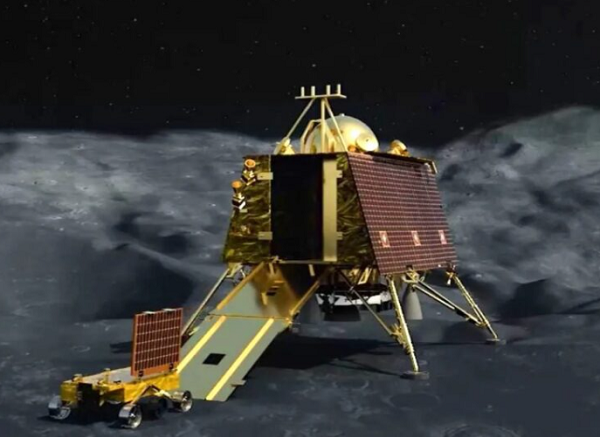NASA Satellite’s Alleged Capture of Chandrayaan-3 Landing: Separating Fact from Fiction

In a recent development that stirred excitement among space enthusiasts, reports surfaced claiming that a NASA satellite may have captured images of the Chandrayaan-3 lunar lander during its descent on the Moon’s surface. However, a closer examination of the situation reveals that the truth might not be as straightforward as the initial claims suggest.
The Chandrayaan-3 mission, an ambitious endeavor by the Indian Space Research Organisation (ISRO) to further explore the Moon’s terrain and study its composition, has been eagerly anticipated since the success of its predecessor, Chandrayaan-2. The latter mission, which included an orbiter, lander, and rover, significantly advanced our understanding of the lunar surface.
The recent reports were triggered by images shared on social media, allegedly captured by a NASA satellite. These images, if indeed authentic, could provide a unique vantage point of the Chandrayaan-3 lander’s descent and landing. However, experts at ISRO and NASA have yet to officially confirm the veracity of these claims.
ISRO, known for its meticulous approach to mission planning and execution, has not released any statements corroborating the reports. Similarly, NASA, with its array of lunar observation satellites, has not made any official announcement regarding the alleged images.
To delve further into the situation, it’s worth considering the technical aspects of lunar imaging. Lunar satellites, including those operated by ISRO and NASA, are equipped with high-resolution cameras capable of capturing intricate details of the Moon’s surface. However, capturing the precise moment of a lunar lander’s descent is exceptionally challenging due to the speed and dynamics involved.
Dr. Anita Sharma, a space imaging expert, emphasized, “The Moon’s rough terrain and the rapid descent of a lander make it incredibly difficult to capture pinpoint images at the right moment. It’s like trying to photograph a moving target in a rugged, low-light environment.”
In light of this, space agencies are known to employ advanced algorithms and predictive models to estimate a lunar lander’s touchdown coordinates. While these estimations are usually accurate, definitive visual proof of a successful landing often comes from the lander’s own cameras or images captured by nearby orbiters.
While the reported images have sparked curiosity and enthusiasm, a certain level of skepticism is warranted until official confirmations are received from ISRO or NASA. The world of space exploration is no stranger to speculation and misinformation, and it’s crucial to rely on validated sources.
As we eagerly await updates from ISRO and NASA, it’s important to acknowledge the significance of international collaboration in space exploration. India’s Chandrayaan-3 mission, regardless of the outcome of these image claims, contributes to the global pursuit of knowledge about our celestial neighbor and pushes the boundaries of human technological prowess.
The alleged capture of Chandrayaan-3’s landing by a NASA satellite remains a subject of interest and intrigue. While the prospect of such images is captivating, it’s essential to exercise caution and await official confirmations from the involved space agencies. As the world looks to the skies with anticipation, the quest for accurate information continues to drive our exploration of the cosmos.
